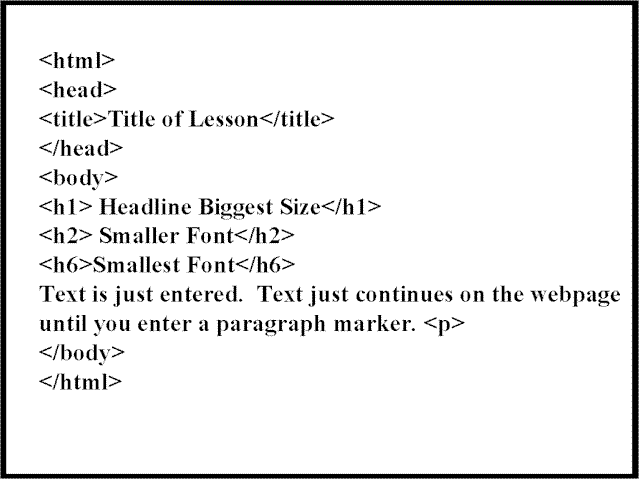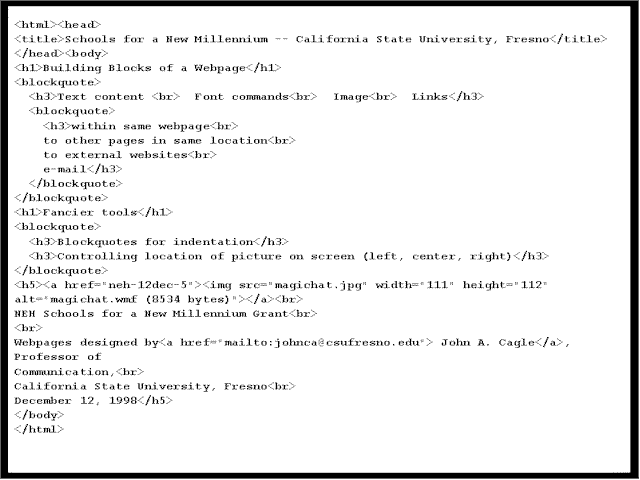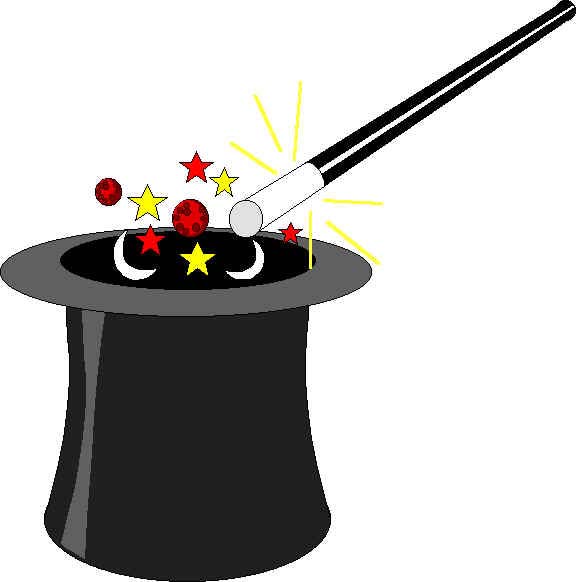
The Internet connects computers all over the world, of course, and everybody knows you move around this World Wide Web by clicking on underlined words and images. Surfing the WWW enables people to go from screen to screen to screen, being dazzled all the way. What is actually going on is rather simple. What goes between the computers are files which are moved using a File Transfer Protocol--essentially an international agreement of the ground rules. "Browsers" are a class of programs with which a user's computer [these are the technical terms] may open and run the files--e.g., Netscape, Internet Explorer, etc.. Internet files are actually programs, written in a simple programming language called HyperText Mark-up Language (HTML), again an international agreement of ground rules. HTML files will run on any computer platform--UNIX, Macintosh, PCs, NEXT, etc.
The browser is actually running the program and executing commands as it reads the HTML file. These commands direct the computer to put text and images on the monitor's screen, to play sound files, and so forth. For example, <h2> is a command to make text on a webpage bigger than the default size, so that "This is the text" will appear on the screen as
Today many user-friendly programs help people make these webpages. Netscape and Internet Explorer both have "composer" programs build in which will allow you to create and edit internet files. Microsoft Word and PowerPoint, for example, have simple commands which will convert any Word or PowerPoint file the user has created into an HTML file. When the HTML file is uploaded and stored in a person's internet account (usually associated with the e-mail account a person has with CVIP, AOL, or similar services), then that file can be accessed by anyone in the world--if they know the address. A common technique to learn HTML is to simply download a webpage you like, open the file in a word processor, and replace the words and picture files with your own original "content."
Do you need to know how to use HTML code? Right now, the programs which help you make a webpage do a good job, but often you will need to go into a source code for a webpage and make a few changes so the page will appear as you want it to appear. Sometimes the "user friendly" programs do strange things to your webpage that you can only fix by adjusting the HTML code.
The structure of a webpage is simple. The illustration below shows a simple HTML file. You can type these directly in a word processor, save as an ASCII text file, and upload to the Internet directory or folder you will store it in. The files need to have an extension: either .htm or .html.

All HTML files have three basic parts:
To create a webpage, you have to know what content you wish to include, have a JPG or GIF files of pictures or images you wish to include, and have some basic knowledge of the simple commands and how to use them.

 Next: Basic Skills
Next: Basic Skills